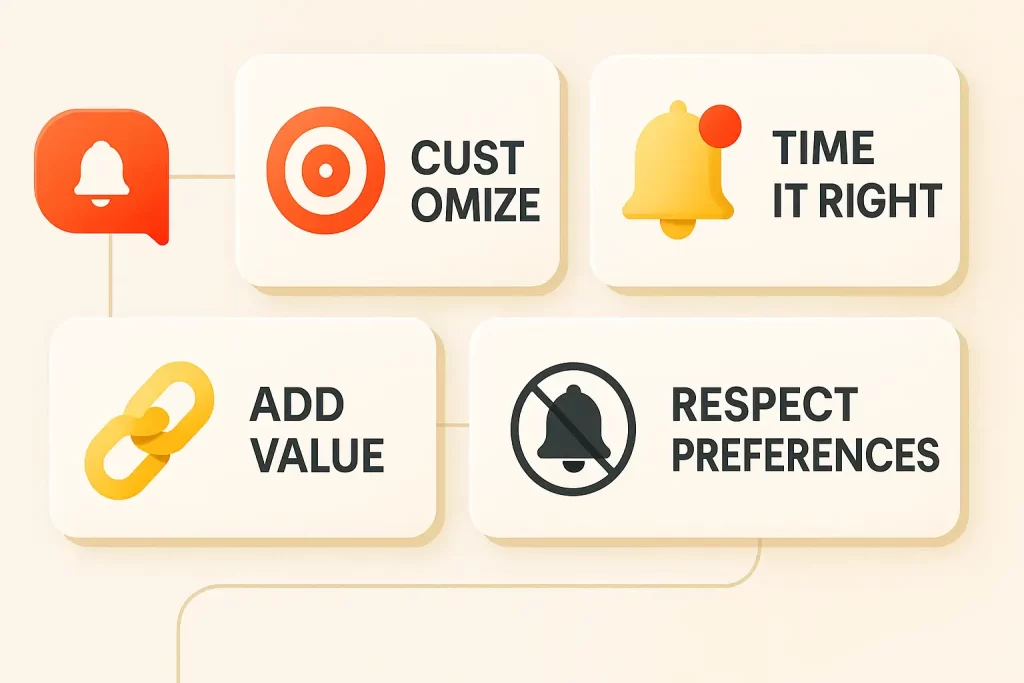In today’s competitive e-commerce landscape, capturing and retaining customers requires a multi-faceted approach. While email marketing remains a cornerstone, push notifications offer a powerful, often overlooked, channel to boost sales and engagement. This guide explores best practices for crafting effective push notification strategies that drive real results for your Shopify store.
Optimizing Your Messaging for Conversions
The effectiveness of your push notifications hinges entirely on the quality of your messaging. Generic or irrelevant notifications will quickly lead to unsubscribes and damage your brand reputation. Instead, focus on creating compelling, personalized messages that resonate with your audience.
Crafting Compelling Copy
- Use a clear and concise subject line: Avoid jargon and get straight to the point. Tell the user what they’ll gain by clicking.
- Personalize the message: Use the customer’s name where possible, and tailor the content to their browsing history or purchase behavior.
- Create a sense of urgency or scarcity: Limited-time offers, flash sales, and low-stock warnings can significantly increase click-through rates.
- Use strong calls to action (CTAs): Make it clear what you want the customer to do (e.g., “Shop Now,” “View Offer,” “Learn More”).
Understanding Your Audience
Before you start sending notifications, take the time to understand your target audience. What are their interests? What kind of messages resonate with them? Consider segmenting your audience based on demographics, purchase history, or browsing behavior to send more relevant and targeted notifications.
Timing and Frequency of Notifications
Sending notifications too frequently can annoy customers and lead to unsubscribes. Finding the right balance between staying top-of-mind and avoiding being intrusive is crucial.
Strategic Timing
- Consider the customer’s time zone: Send notifications during times when they are most likely to be active and receptive.
- Experiment with different times of day: A/B test different send times to determine what works best for your audience.
- Trigger notifications based on specific events: Send notifications when a customer abandons their cart, browses a specific product, or completes a purchase.
Optimal Frequency
There’s no magic number for notification frequency. It depends on your audience, your industry, and the types of messages you’re sending. Start with a lower frequency and gradually increase it based on your results. Monitor your unsubscribe rate closely to identify any signs of notification fatigue.
A/B Testing Your Campaigns
A/B testing is essential for optimizing your push notification strategy. By testing different messaging, timing, and calls to action, you can identify what resonates best with your audience and improve your conversion rates.
Key Elements to Test
- Subject lines: Test different subject lines to see which ones have the highest open rates.
- Messaging: Experiment with different tones, styles, and calls to action.
- Timing: Test different send times to determine when your audience is most receptive.
- Images and emojis: See if adding visuals improves click-through rates.
Analyzing Your Results and Making Improvements
Regularly analyzing your push notification data is crucial for identifying what’s working and what’s not. Track key metrics such as open rates, click-through rates, and conversion rates to measure the effectiveness of your campaigns.
Key Metrics to Track
- Open rate: The percentage of recipients who opened your notification.
- Click-through rate (CTR): The percentage of recipients who clicked on your notification.
- Conversion rate: The percentage of recipients who completed a desired action (e.g., made a purchase).
- Unsubscribe rate: The percentage of recipients who unsubscribed from your notifications.
Use this data to inform your future campaigns. If a particular message or timing isn’t performing well, adjust your strategy accordingly.
Integrating with Other Marketing Tools
Push notifications are most effective when integrated with other marketing tools. Combining push notifications with email marketing, SMS marketing, and social media campaigns can create a more comprehensive and effective marketing strategy.
Synergistic Marketing
- Email Marketing: Use push notifications to complement your email campaigns, providing timely updates and reminders.
- SMS Marketing: Use SMS messages for immediate alerts and critical updates, while push notifications can provide more detailed information.
- Social Media: Promote your products and offers on social media, and then use push notifications to drive traffic to your website.
A Data-Driven Approach to Push Notification Marketing
Mastering push notification marketing requires a data-driven approach. By crafting compelling messages, optimizing timing and frequency, A/B testing your campaigns, and analyzing your results, you can create a highly effective strategy that drives sales and boosts customer engagement. Remember, consistent monitoring and improvement are key to long-term success.
Tools like Pushloop can significantly simplify this process, providing the analytics and automation necessary to streamline your push notification efforts. They allow you to easily segment your audience, personalize messages, and schedule campaigns — all from a user-friendly interface.

